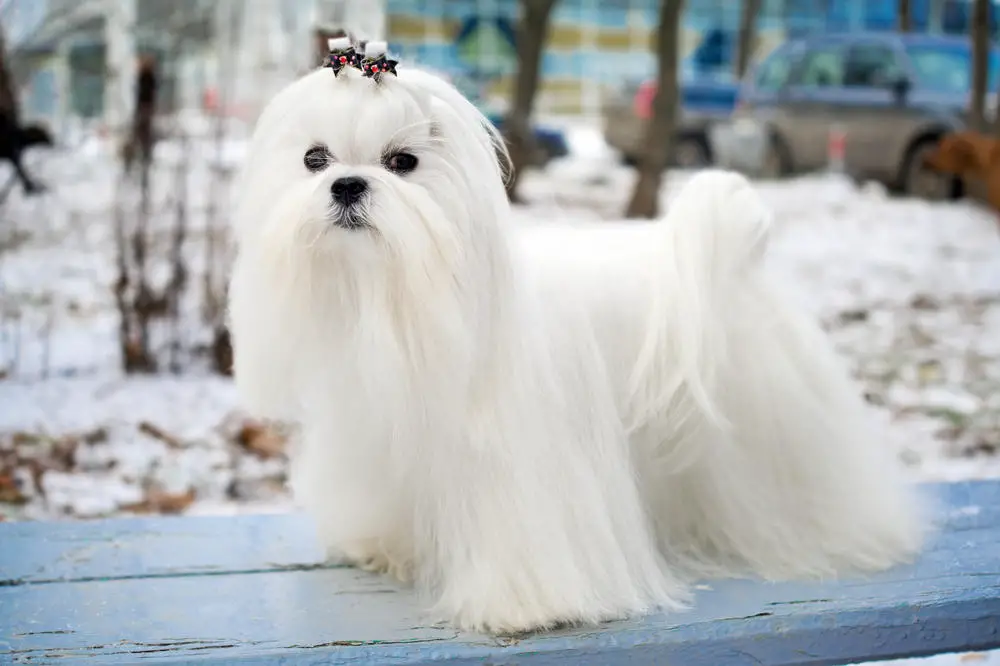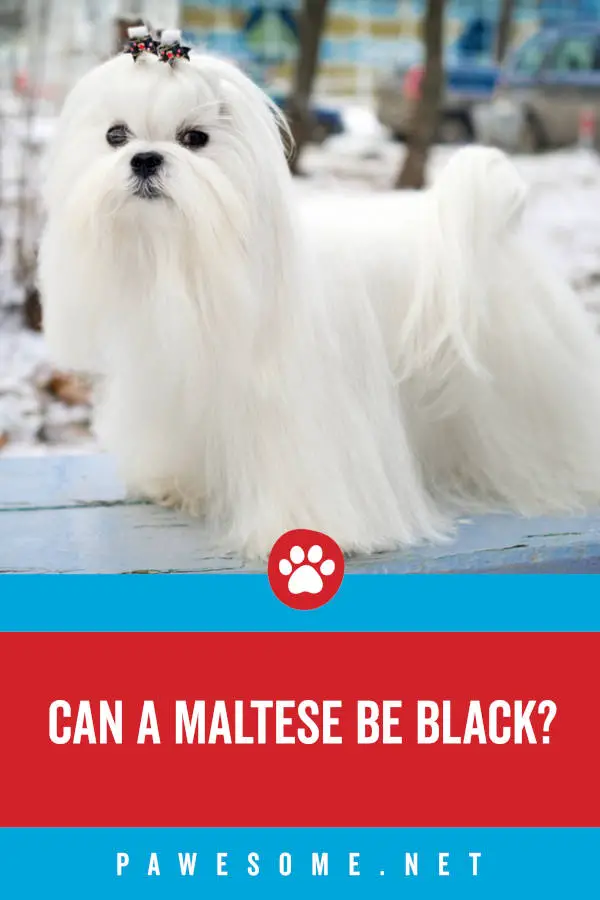
A breed that’s known by many names, from the dramatic “Ye Ancient Dogge of Malta” to the flirtatious “The Comforter” to just “Maltese Terrier, the Maltese, as it is known today, is a gentle, friendly and fearless breed.
Nowhere close to being as haughty in disposition as in their looks, these dogs are energetic dogs who make for great companions, therapy dogs and even excel as competitors in dog sports.
Additionally, this toy breed, among the oldest-known toy breeds in the world, loves people and needless to say, many people around the world have given their hearts up to these silky-haired fluffers!
However, there’s a very valid question that’s being asked (and has been asked, for some time now) about Maltese colors. Many breeders out there claim to be selling pure-bred black Maltese and many people claim it to be a breed of its own, but if you’re a fan of all things “American Kennel Club” (or just the plain truth!) a black or brown Maltese doesn’t exist!
In this article, we get into the finer details of Maltese coloring, including the history of the breed’s coloring, why they’re white and whether discoloration is a possibility. Read on for more information on these tiny dogs with huge personalities!
Maltese Colors – A Brief History
Maltese are one of the most ancient breeds to grace our planet, having been around since 8000 years ago! Of course, like all other things (except for cockroaches and Kim K’s dress sense), Maltese evolved too, and with them, their coloring.
It was in 1877 that pure white Maltese took center stage; a pure white Maltese was shown at a dog event in Westminster, where the breed also earned the name “Maltese Lion Dog”. In 1879, though, a white Maltese with black ears was shown; christened the Maltese Skye Terriers, the debate behind Maltese coloring probably sparked here!
Maltese haven’t always been white coated; there are instances of them being “all colors” and being allowed to participate in shows between 1902 and 1913, according to the UK Kennel Club. The coats of these multi-colored dogs were also much more coarse than the solid white coats we see today.
With an increasing demand in the breed’s puppies, breeders in the United States sought to crossbreed puppies in order to produce perfectly-sized Maltese. After a lot more breeding and evolution in between, Maltese dogs have turned out to be pure white dogs, having been this way from the 1950s.
Why Are Maltese So White?
The reason that Maltese are white is simply that they were bred with a focus on saving the white color; this is the breeding that’s been targeted and that is accepted in shows and competitions. It is what sets apart a purebred Maltese. Therefore, after years of targeted breeding, across generations, Maltese today are white.
So What Colors Can Maltese Be?
Though Maltese are primarily white, you can find different color combinations in the breed, generally a result of breeding. However, the American Kennel Club, the authority on all things “dog” in the United States, accepts only 3 colors of Maltese and one marking.
If you intend to show your dog, parade him or her and enroll in competitions, you should pay note to the colors accepted by the AKC!
The AKC accepts white (color code S199), white and tan (color code A217) and white and lemon (color code A211). Though the latter two are accepted, they aren’t that preferable; the AKC prefers these colors on the ears only! The only marking accepted is black markings (this means that only the eye rims, nose, lips and paw pads are accepted in solid black).
The Federation Cynologique International, also known in a more pronounceable manner as the World Canine Organization, accepts pale ivory or cream Maltese, as well as traces of pale orange. Therefore, if you want the maximum points in any dog show or competition, your Maltese needs to be the accepted shade of white!
Is Discoloration Possible?
Yes, discoloration is possible, but not to the extent that your Maltese turns black! Maltese change color slightly as they mature, exhibiting slight lemony, brown or tan spots as they age.
However, this discoloration can’t always be put down to genetics. Factors such as years of staining, dirt, grime accumulation and so on can lead to your puppy getting discolored. Tear stains are one of the biggest reasons for discoloration around the eyes of Maltese.
Additionally, albino Maltese exist, though they are supremely rare. Albino Maltese have pink-ringed eyes and noses and even blue eyes.
Effects of Crossbreeding on Maltese Color
When you cross a Maltese with a dog of another breed, the puppies born are a mixed breed. There are a number of colors that the Maltese puppy can be, such as brown, black, tan, patchy colors and white.
Depending on the breed you crossed your doggo with, you may even get other exotic colors! Again, don’t fall for all this false advertising about Maltese of colors other than white being rare purebreds!
So Do Purebred Brown or Black Maltese Exist?
Long story short, there are no such things as purebred black or brown Maltese but you can find crossbred Maltese that may be black or brown thanks to the non-Maltese side of the family. Therefore, advertisements for black Maltese puppies should be thoroughly checked out; generally, the cross breeder wants to trap unknowing people.
Don’t fall for the “rare” tag; report the breeder to the kennel clubs so that such false advertisements and fraud, of selling crossbred black Maltese puppies as purebred, are reduced!
In Conclusion
Brown and black Maltese have become all the rage now, with many folks around the world wanting one. However, if you were paying attention, you know that purebred black Maltese don’t exist; they can have slight markings or change colors but are not black!
Having said that, the color of your Maltese shouldn’t (and doesn’t!) matter if you’re not going to breed, parade or put him/her into dog competitions. As mentioned, if you do come across breeders selling these pups, report them, as more often than not, these puppies come from horrible puppy mills.
Additionally, cross breeding leads to health issues in the puppy, requiring you and your vet to monitor closely your puppy and remember schedules and know what to expect or look out for in your Maltese!
If you still badly want an adorable black ball of fluff, pick a breeder who’s honest about his puppies, one that will tell you if they’re crossbred or not. If your puppy is black, then an honest breeder will tell you the truth about the parentage/lineage. There’s no denying that though these pups are susceptible to health issues, they’re still healthy, fun pets to have around!

